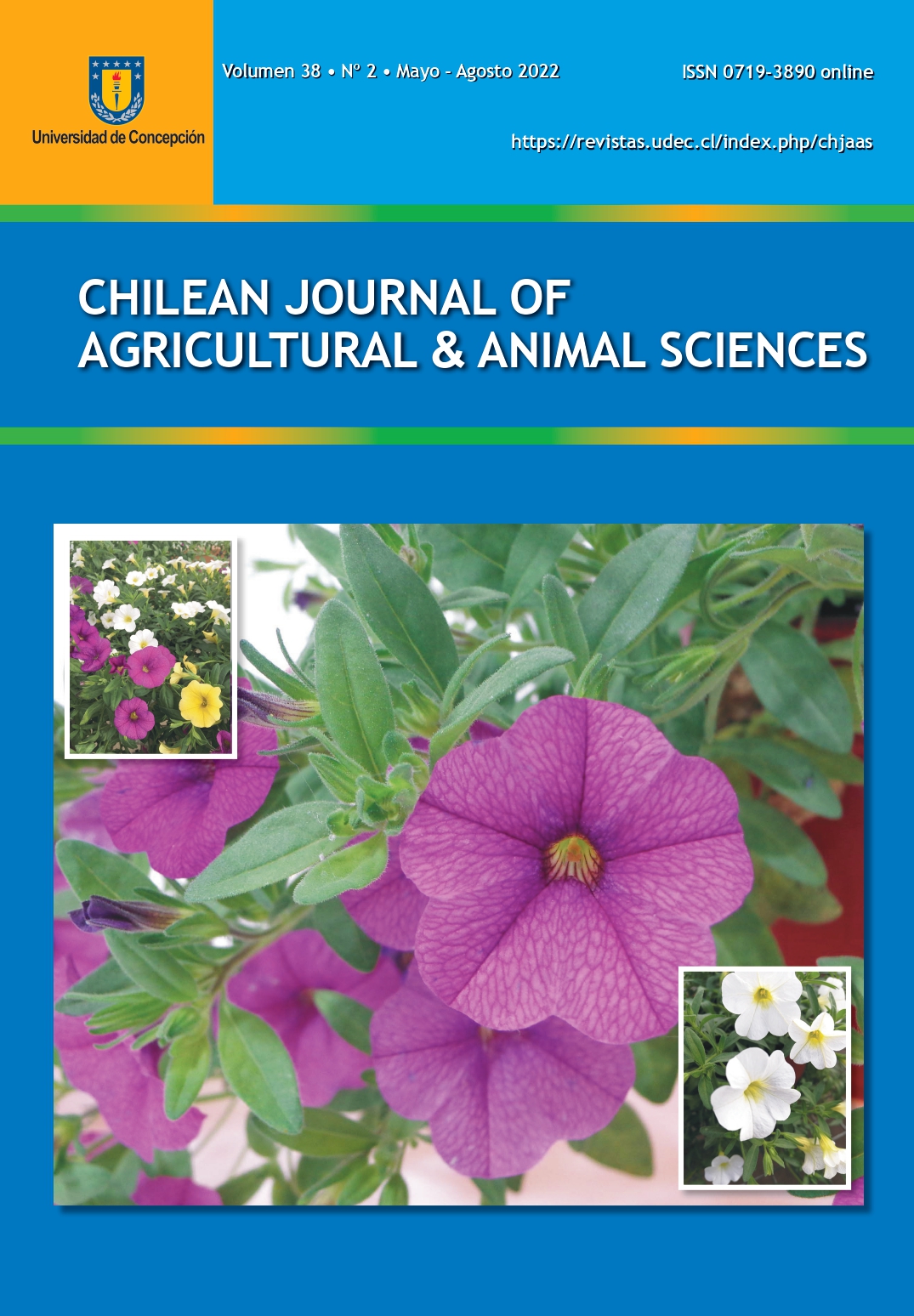CHARACTERIZATION OF RHIZOME AND PSEUDOSTEM WET ROT OF ORGANIC BANANA (Musa sp.) IN PIURA, PERU
DOI:
https://doi.org/10.29393/CHJAA38-17CRRC70017Keywords:
Dickeya , Pectobacterium, rot, bacteriosis, banana, characterization.Abstract
Organic banana (Musa sp.) is one of the most important export crops in Peru, especially in the Department of Piura. The cultivation of the crop is mainly affected by biotic factors, resulting in important economic losses. The aim of this research was to characterize the causal agent of banana bacteriosis disease in Piura. Bacterial isolates were extracted from rhizome and pseudostem samples of organic bananas with typical symptoms of soft rot from different banana growing areas of Piura. Sixty colonies were obtained, while 10 isolates were selected for presenting cultural and morphological characteristics similar to those of Pectobacterium (01MB, 04MB, 05MB, 06MB and 10MB) and Dickeya (02MB, 03MB, 08MB, 07MB and 09MB); different biochemical and molecular tests were conducted. The pathogenicity of the isolates was confirmed by in vitro and in vivo inoculation of rhizome pieces and pseudostems from cultivated plants. The 10 isolates were gram negative and with perimeter flagella. The biochemical tests showed that all the isolates were positive on nutrient agar medium, Mac Conkey, catalase, gelatin hydrolysis and growth at 37°C, whereas they were negative on King’s B medium, nitrate reductase and oxidase tests. Isolates 02MB, 03MB, 08MB, 07MB and 09MB also tested positive for erythromycin and indole, while isolates 01MB, 04MB, 05MB, 06MB and 10MB were positive for CVP (Crystal violet pectate). Molecular identification and phylogenetic analysis confirmed that isolates 01MB, 04MB, 05MB and 10MB corresponded to Pectobacterium carotovorum subsp. carotovorum; isolates 03MB and 08MB corresponded to Dickeya chrysanthemi; and 02MB and 07MB corresponded to Dickeya paradisiaca and Klebsiella variicola, respectively. It was concluded that rhizome and pseudostem wet rot of banana grown organically in Piura is caused by the bacterial complex formed by P. carotovorum subsp. carotovorum, D. chrysanthemi, D. paradisiaca and K. variicola. This is valuable information for the implementation of appropriate disease management practices in the area.
Downloads
Published
How to Cite
Issue
Section
Copyright (c) 2022 Robert Rafael-Rutte, Luisa Zavala, Edgar A. Maldonado, René Aguilar-Anccota, Manuel Saucedo-Bazalar, James Tirado-Lara, Carmen Aquije

This work is licensed under a Creative Commons Attribution 4.0 International License.







